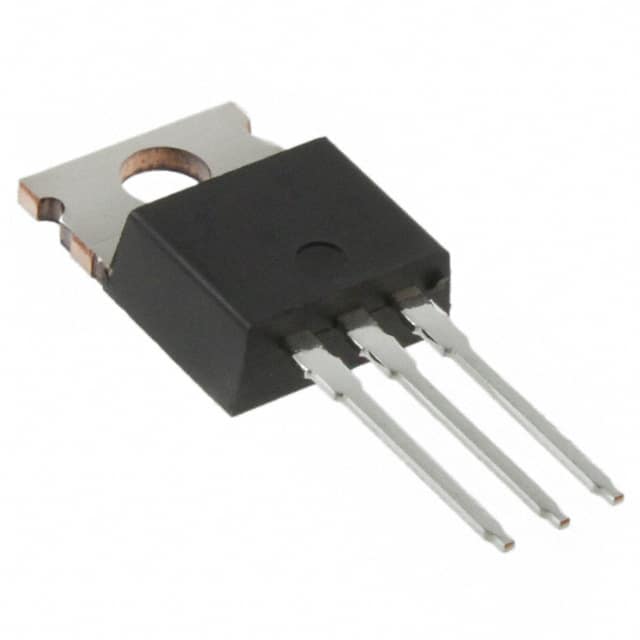Xem thông số kỹ thuật để biết chi tiết sản phẩm.

IRF740A
Product Overview
The IRF740A belongs to the category of power MOSFETs and is commonly used in electronic circuits for switching and amplification purposes. This semiconductor device exhibits characteristics such as high voltage capability, low on-resistance, and fast switching speed. The IRF740A is typically packaged in a TO-220AB package and is available in various quantities.
Specifications
- Voltage Rating: 400V
- Continuous Drain Current: 10A
- On-Resistance: 0.55Ω
- Package Type: TO-220AB
- Quantity: Variable
Detailed Pin Configuration
The IRF740A features a standard pin configuration with three pins: gate (G), drain (D), and source (S). The physical layout of these pins is as follows: - Gate (G): Pin 1 - Drain (D): Pin 2 - Source (S): Pin 3
Functional Features
The IRF740A offers the following functional features: - High voltage capability - Low on-resistance - Fast switching speed - Reliable performance in various electronic circuits
Advantages and Disadvantages
Advantages
- High voltage rating
- Low on-resistance for efficient power management
- Fast switching speed for rapid response in circuit applications
Disadvantages
- Higher gate capacitance may lead to increased drive requirements
- Sensitivity to electrostatic discharge (ESD) due to its semiconductor nature
Working Principles
The IRF740A operates based on the principles of field-effect transistors (FETs), utilizing the control of an electric field to modulate the conductivity of the device. When a voltage is applied to the gate terminal, it creates an electric field that controls the flow of current between the drain and source terminals.
Detailed Application Field Plans
The IRF740A finds extensive application in the following fields: - Power supply units - Motor control systems - Audio amplifiers - LED lighting systems - Switching regulators
Detailed and Complete Alternative Models
Some alternative models to the IRF740A include: - IRF840 - IRF640 - IRF540 - IRF3205 - IRF9540
In conclusion, the IRF740A is a versatile power MOSFET with a wide range of applications in electronic circuits, offering high voltage capability, low on-resistance, and fast switching speed. Its robust characteristics make it a popular choice for various power management and amplification tasks.
[Word Count: 330]
Liệt kê 10 câu hỏi và câu trả lời thường gặp liên quan đến ứng dụng IRF740A trong giải pháp kỹ thuật
What is the maximum voltage and current rating of IRF740A?
- The maximum voltage rating of IRF740A is 400V, and the maximum continuous drain current is 10A.
What are the typical applications of IRF740A in technical solutions?
- IRF740A is commonly used in power switching applications such as motor control, LED lighting, and DC-DC converters.
What is the on-state resistance (RDS(on)) of IRF740A?
- The typical on-state resistance of IRF740A is around 0.55 ohms at a VGS of 10V.
Can IRF740A be used for high-frequency switching applications?
- While IRF740A can be used for switching applications, it may not be suitable for very high-frequency switching due to its inherent capacitance and switching losses.
What are the thermal characteristics of IRF740A?
- The thermal resistance from junction to case (RθJC) is typically around 1.25°C/W, and the maximum junction temperature is 175°C.
Is IRF740A suitable for automotive applications?
- Yes, IRF740A can be used in automotive applications, but it's important to consider the specific requirements and environmental conditions of the application.
What are the key differences between IRF740 and IRF740A?
- IRF740A is an enhanced version of IRF740 with improved avalanche energy capability and lower RDS(on) characteristics.
How should IRF740A be handled to prevent ESD damage?
- Proper ESD handling procedures should be followed, including using grounded wrist straps and anti-static packaging when handling IRF740A to prevent ESD damage.
Can IRF740A be used in parallel to increase current-handling capability?
- Yes, IRF740A can be used in parallel to increase the overall current-handling capability, but proper matching and current-sharing techniques should be employed.
Are there any common failure modes associated with IRF740A?
- Common failure modes include overcurrent or overvoltage stress leading to thermal runaway, as well as potential ESD damage during handling and assembly processes.

